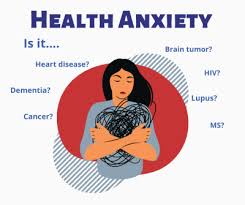Anxiety and Gender Exploring Gender Differences in Anxiety Disorders

Unveiling Gender Disparities in Anxiety Disorders
Delving into the world of anxiety disorders uncovers complex disparities in occurrence, presentation, and therapy among genders. While anxiety disorders affect persons of all genders, research suggests that women are more prone than males to develop anxiety disorders, including generalized anxiety disorder (GAD), panic disorder, and social anxiety disorder. However, the causes contributing to these gender differences are diverse and multifaceted, spanning biological, psychological, and societal aspects.
Biological and Hormonal Factors
Biological and hormonal factors have a crucial influence in creating gender variations in anxiety disorders. Research suggests that hormonal variations related with the menstrual cycle, pregnancy, and menopause may lead to greater sensitivity to anxiety symptoms in women. Moreover, differences in brain structure and function, neurotransmitter activity, and stress response systems may predispose individuals of various genders to differing patterns of anxiety expression and modulation.
Sociocultural and Environmental Influences
Sociocultural and environmental variables contribute to gender disparities in anxiety disorders, reflecting broader societal norms, expectations, and experiences. Society pressures connected to gender roles, body image, and interpersonal interactions may worsen anxiety symptoms in women, who may feel heightened pressure to fulfill society standards of perfection and performance. Moreover, experiences of discrimination, marginalization, and gender-based violence can contribute to greater vulnerability to anxiety disorders among individuals of marginalized genders.
Gendered Patterns of Anxiety Expression
Gendered patterns of anxiety expression manifest in various ways across genders, indicating disparities in symptom presentation, coping methods, and help-seeking behaviors. While women may exhibit internalizing symptoms such as rumination, worry, and avoidance, men may be more likely to externalize anxiety through behaviors such as aggressiveness, substance misuse, and risk-taking. These gendered variations of anxiety expression may reflect underlying disparities in socialization, emotional regulation, and coping methods.
Barriers to Diagnosis and Treatment
Barriers to diagnosis and treatment lead to inequities in access to mental health care and support for individuals of various genders. Women may be more likely to seek care for anxiety symptoms and receive a diagnosis due to greater understanding and acceptance of mental health issues. However, men may experience stigma, shame, and unwillingness to seek help for anxiety, leading to underdiagnosis and undertreatment of anxiety disorders. Moreover, healthcare personnel may demonstrate gender bias in diagnosing and treating anxiety, potentially neglecting or misinterpreting symptoms among individuals of marginalized genders.
Intersectionality and Multiple Marginalization
Intersectionality and multidimensional marginalization further aggravate the experiences of anxiety disorders for those who navigate intersecting identities based on race, ethnicity, sexual orientation, disability, or socioeconomic class. Intersectional experiences of discrimination, oppression, and systemic inequalities may increase anxiety symptoms and present further hurdles to getting culturally competent and inclusive mental health care. Moreover, individuals with intersecting marginalized identities may confront specific obstacles in negotiating cultural expectations, interpersonal connections, and structural barriers to well-being.
Gender-Informed Approaches to Treatment and Support
Gender-informed methods to treatment and support highlight the importance of addressing gender-specific needs, experiences, and barriers in the provision of mental health care. Tailoring treatment methods, treatments, and support systems to account for gender differences in symptom presentation, coping mechanisms, and help-seeking behaviors promotes the effectiveness and accessibility of mental health care for persons of both genders. Moreover, building gender-sensitive and inclusive settings that respect varied experiences and identities improves a sense of safety, belonging, and empowerment for persons seeking support for anxiety disorders.
Empowering Gender-Responsive Advocacy and Policy
Empowering gender-responsive advocacy and policy actions involves tackling systemic disparities, fostering gender equality, and improving mental health parity for individuals of all genders. Advocating for policies that prioritize mental health education, prevention, and early intervention programs in schools, workplaces, and communities minimizes stigma and promotes awareness of anxiety disorders across genders. Moreover, campaigning for gender-responsive mental health services, research funding, and policy initiatives ensures that the unique needs and experiences of individuals of all genders are recognized, appreciated, and addressed in the fight for mental health equity.
Conclusion
Researching gender variations in anxiety disorders gives light on the intricate interplay of biological, psychological, and societal elements that affect the experiences of anxiety across genders. By identifying and addressing gender-specific needs, experiences, and challenges, mental health practitioners, policymakers, and advocates can support gender-inclusive approaches to prevention, diagnosis, and treatment of anxiety disorders. By cultivating inclusivity, equity, and empowerment, we can create a future where persons of all genders have access to the support, resources, and opportunities they need to thrive in mental health and well-being.





